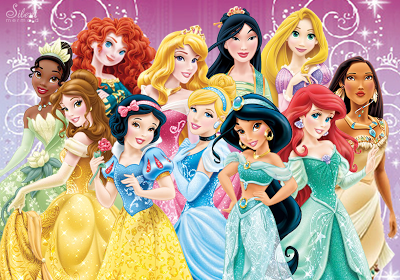Note: Once I began to research the post became ver long, very quickly. Therefore, I will focus on the three little girls in the films opening, and save further exploration for another time :)
It is commonly accepted that Cinderella is based on the German folk story, Aschenputtel, recorded by the brothers Grimm. This is, however, only partly true. The story exists in several forms, with the Disney version containing elements closer to the French version of the story, Cinderillon.
 |
| Illustration of Aschenputtel by Oliver Herford. |
 |
| Cendrillon Illustration by Gustav Dore |
Although this observation does not concretely verify that Disney's Cinderella takes place in France, it does support the supposition. In addition, several of the players have characteristically French names… Drizella, Jaques, Anastasia, Lady Tremaine. Thus, I explored the costumes in the film under the assumption that the dress would particularly reflect French trends of the period.
The film opens to Cinderella and her father watering a horse by a fountain while her Stepmother and daughters watch from a window.
This lovely painting showcases not only French indulgence in fabric and decorative elements, but also a sampling of hairstyles that were fashionable at the time. Their ringlets are worn loose about their shoulders in keeping with the period, however, Drizella's gigantic bow is a liberty taken by the character animator, again, in order to establish the step-sisters as silly little girls.
Based solely on the shape of the three girl's skirts, the film can instantly be placed in the crinoline period, spanning the years from 1850-1869. Upon observing that they all boast a perfect bell-shape, the period is narrowed further to early crinoline (the bell shape gave way to a more ovular shape later in the period).
The attention to detail here is both lovely and accurate. First, the three girls sport skirts that begin at their true waistline and are much shorter than what a grown woman would have worn, leaving Anastasia's pantalettes peaking from under her skirt! These characteristics are in keeping with reference from the period. It looks rather funny and sets the tone for the step-sisters to be seen as little fools.
The bright colors, ruffling, and bows are not inaccurate, especially given that the French were far more indulgent when it came to decorative elements, although the colors have been intensified:
 |
| American dress from the period. |
 |
| Painting of Empress Eugenie surrounded by her ladies in waiting. |
This post went a little long, so I will touch on Cinderella's father and stepmother in my next post. Just for fun, look what I came across while researching!:
It's kind of like that time Disney flattened all the princesses' features and lightened their skins to make them look EXACTLY THE SAME:
Why do the princesses need to look like they all go to the same high school? WHY DO THEY NEED TO STAND NEXT TO EACH OTHER EVER? THEY EXIST IN DIFFERENT WORLDS!?! Woof. That's a post in and of itself.







No comments:
Post a Comment